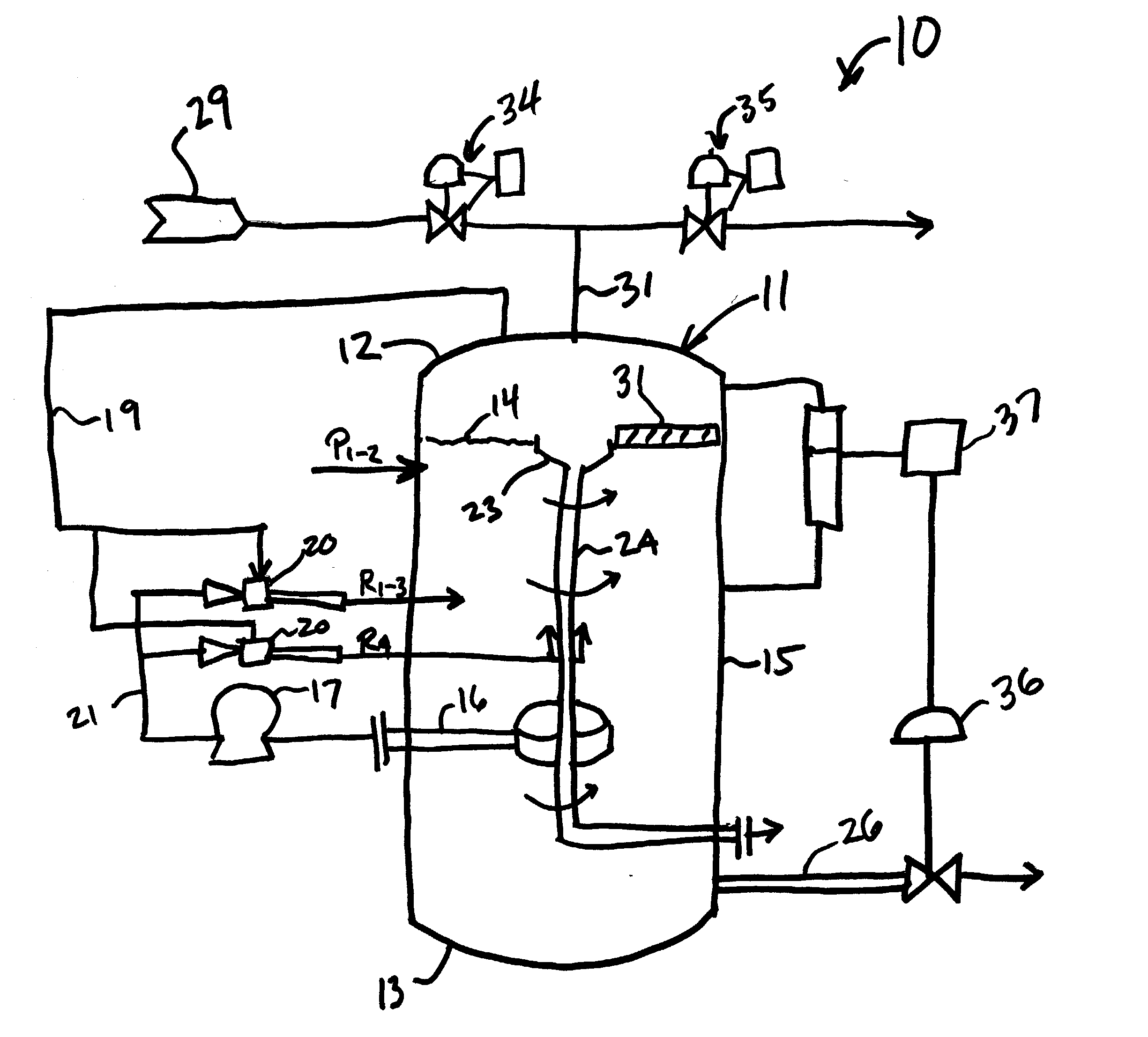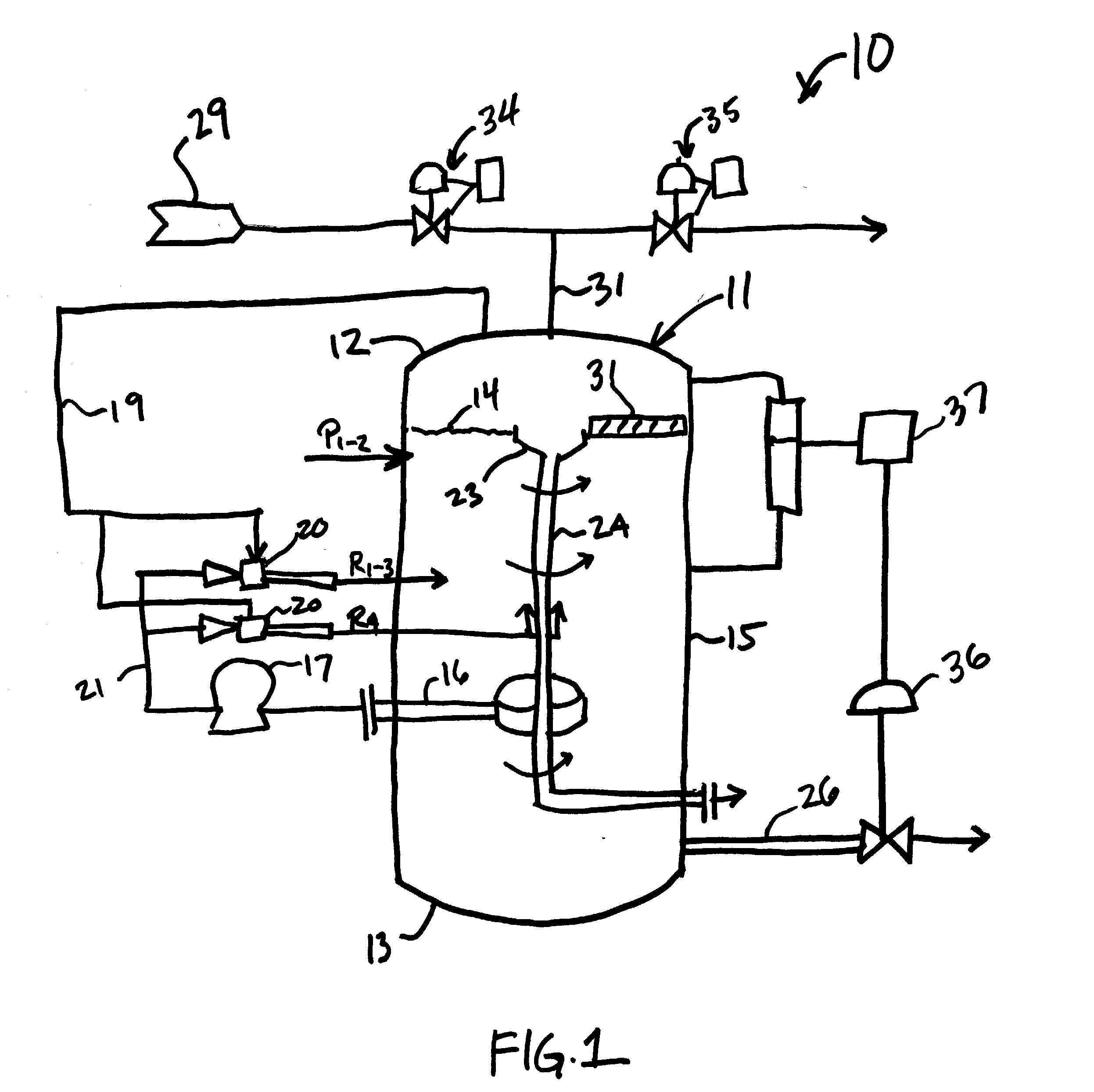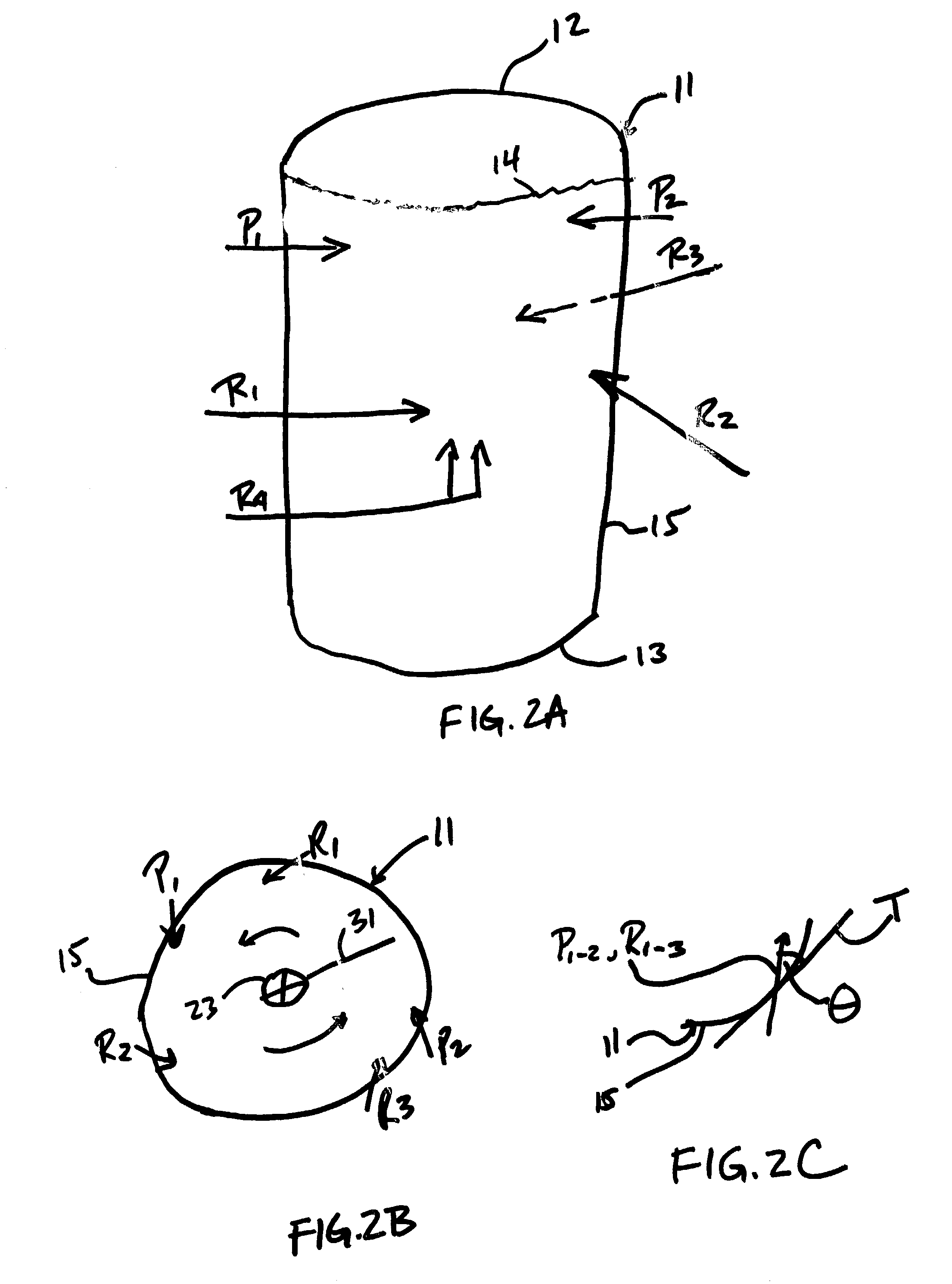Method and apparatus for removing hydrocarbons from water
a technology of hydrocarbons and water, applied in the direction of multi-stage water/sewage treatment, instruments, separation processes, etc., can solve the problems of large amount of natural gas produced, adversely affecting marine life, and numerous drawbacks, so as to reduce the content of hydrocarbons, encourage cyclonic flow, and encourage cyclonic flow
- Summary
- Abstract
- Description
- Claims
- Application Information
AI Technical Summary
Benefits of technology
Problems solved by technology
Method used
Image
Examples
Embodiment Construction
[0038] Turning to FIG. 1, an improved apparatus 10 is disclosed which has a vertical orientation and can provide a superior substitute for the currently employed HIGF separators. The apparatus 10 includes a vessel 11 which has a height to width ratio ranging from about 5.0 to about 1.5, preferably about 2.5. One suitable size for the vessel 11 is a height of 10 feet and a width or diameter of 4 feet.
[0039] Production water is introduced into the vessel through one or more input inlets indicated at P.sub.1, P.sub.2 in FIGS. 1 and 2A-2C. It will be noted that the number of production water input inlets can vary in anywhere from 1 to 3 or 4 and that the use of two production water input inlets P.sub.1, P.sub.2 as shown in FIGS. 1 and 2A-2C is an example, albeit a preferred example. Referring to FIGS. 2A-C, it will be noted that the production water input inlets P.sub.1, P.sub.2 are directed "tangentially" with respect to the vessel 11. That is, the nozzles P.sub.1, P.sub.2 are directed...
PUM
| Property | Measurement | Unit |
|---|---|---|
| length | aaaaa | aaaaa |
| angle | aaaaa | aaaaa |
| diameter | aaaaa | aaaaa |
Abstract
Description
Claims
Application Information
 Login to View More
Login to View More - R&D
- Intellectual Property
- Life Sciences
- Materials
- Tech Scout
- Unparalleled Data Quality
- Higher Quality Content
- 60% Fewer Hallucinations
Browse by: Latest US Patents, China's latest patents, Technical Efficacy Thesaurus, Application Domain, Technology Topic, Popular Technical Reports.
© 2025 PatSnap. All rights reserved.Legal|Privacy policy|Modern Slavery Act Transparency Statement|Sitemap|About US| Contact US: help@patsnap.com



